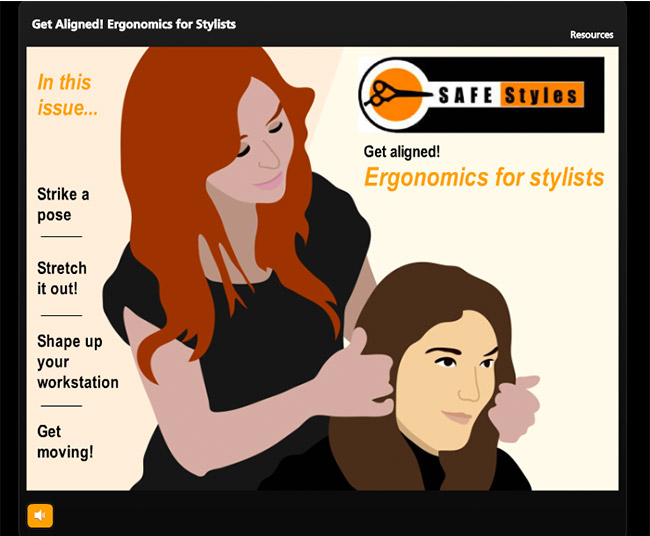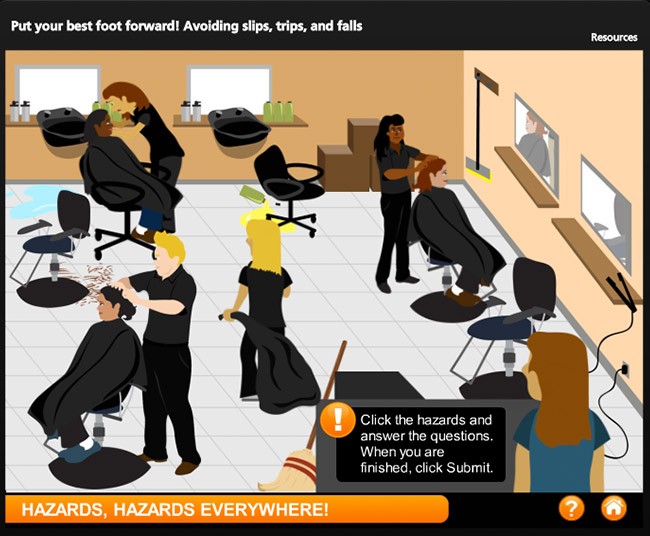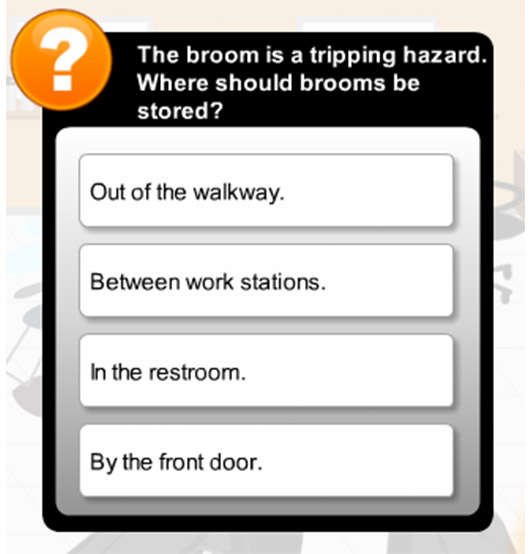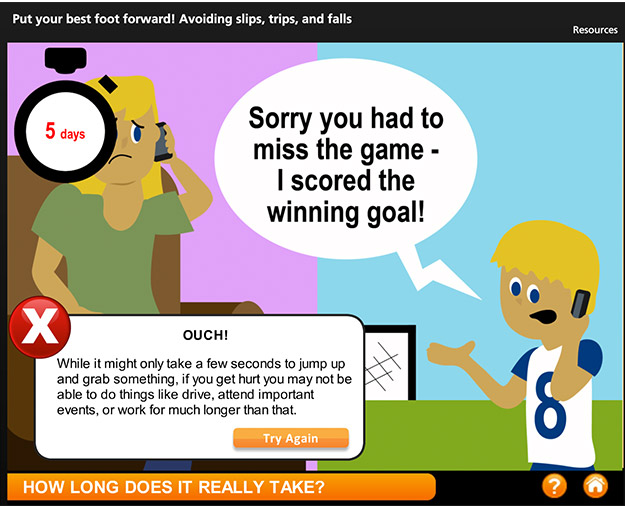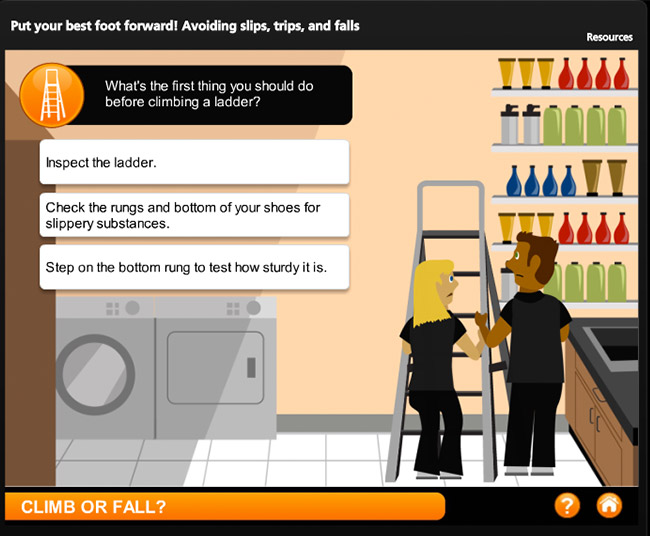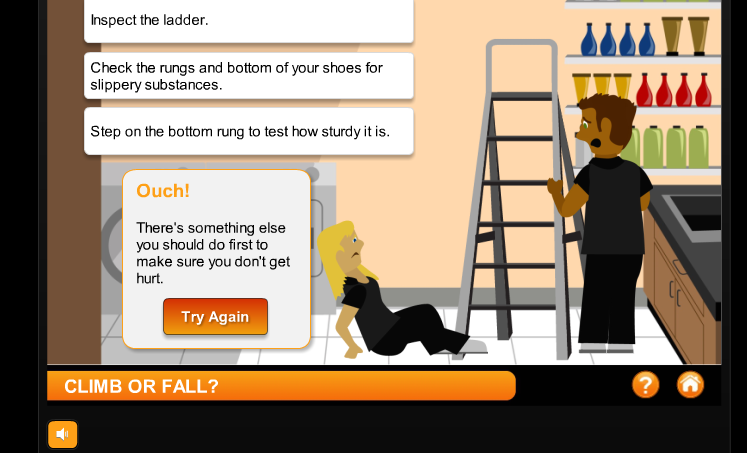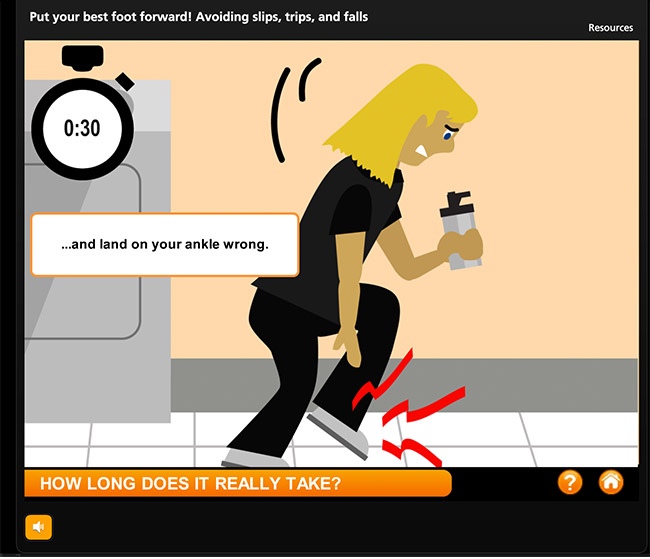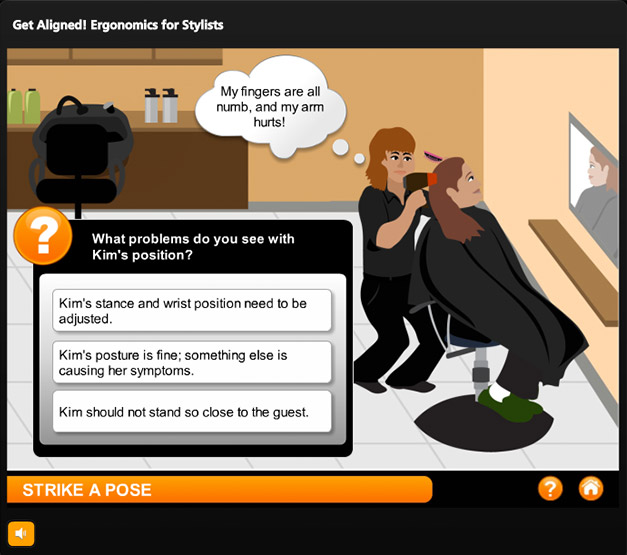In our business, there’s no better feeling than having a great client. A partner who wants to make memorable eLearning that engages the target learner. One such client of ours is Regis Corporation, a global leader in beauty salons and cosmetology education. Regis is committed to excellence in training and continuous learner improvement, and we have been helping the Regis Safety Group design and develop a new eLearning program since September of 2013.
Our current focus with Regis is safety training. Regis keeps its hair salons safe for guests and employees by complying with OSHA regulations. In the past, training was a combination of face-to-face and DVD based, led by managers during monthly meetings. Salons would have a briefcase of print materials to work through as part of this training. But Regis wanted to make the process more efficient and engaging. They really wanted to shift to an online delivery format and the recent implementation of a new LMS gave them the ability to do this, and track completion as well.
Regis’s Goals:
- Make OSHA training easier to track for each learner.
- Make safety training more engaging, memorable and effective.
Regis asked us to design an eLearning program that included five online modules that they could use for the initial eLearning launch. They asked us to develop three of the five modules AND provide all design & development assets along with ongoing development support. The Safety Group’s goal was to be able to update the first three courses on their own, develop the final two courses in house, and even create more courses in the future.
The Design Meeting:
Design choices were driven by our target audience: salon employees such as stylists and managers. Salon employees are on the move all day, not sitting at a desk with immediate access to a computer. They have very little time to devote to training. We designed the eLearning program to include small bursts of five-minute activities with self-paced modules that could be taken during breaks or in between customer appointments. Doing so allowed salon employees to finish a module and get to their next appointment without losing their progress. We also focused on a clean, conversational writing style with engaging visuals and learner interactions.
Regis had already seen our work samples such as the award-winning Avoid the BBPs course and Building Evacuation course, and this influenced some of their “must-haves” for the design. They liked the idea of an illustrated look and feel… and also wanted to create an immersive learner experience.
Key Features of the courses
- Custom illustrations: An illustrated environment eliminates the problem of learners looking at a photo and saying “that’s not my salon!” We created fictitious settings where all the elements were strategically correct (chairs, displays, etc) but in an illustrated format. This way, learners can see themselves in the environment. Quick visits to a few actual salons allowed us to observe salon employees in action and take photos of the salon work areas that served as the inspiration for our illustrated look.
- Interactions instead of text: Since most of the safety topics are “common sense” in nature, each module consists of interactions that allow the learners to practice proper safety procedures.
- Strategic audio… with a transcript: Regis liked the idea of using audio to add to the learning experience. Since some salons place their employee computer “station” on the salon floor, we created a transcript feature so stylists can complete a course without disturbing guests or other salon employees.
- Scenario-based: Each course has 4-6 activities, and learners are immediately dropped into situations to see if they make the right choices. If they cannot, they are shown the consequences and given a chance to try again. We made the consequences real: your character can get injured, miss time at work, etc if safety procedures aren’t followed in the course… just like in real life.
- Mobile Friendly: We made all the courses iPad-friendly.
Example: The Ladder Activity
This ladder safety activity is a great example of the course’s design. The goal? Answer five questions about ladder safety correctly. If learners answer correctly, the character climbs up the ladder safely. If the learner answers incorrectly, the character falls off and makes an “ouch!” sound. Learners then must answer a question to climb back up.
While the answers to these questions may seem like common sense, the activities (and consequences) show and remind learners, “Oh! Here’s what can happen if you don’t do it right.”
Example: Reaching High Places Safely
Employees don’t always realize that the safest way can be the fastest. In this activity, learners have three options: find someone to help them climb a ladder, jump up to get the product, or jump on top of the dryer. We ask: “What is the fastest way?”
If learners choose to jump, it takes one second to get the product, but they sprain their ankle and must go to the doctor.
If they choose the dryer, they accidentally knock all products over and must pick up what they’ve knocked down.
Learners receive feedback in the form of a winding clock that goes down no matter what they do. The course is designed so that the “safe” way takes less time than other choices because of all the potential risks.
Ergonomics Course
This second course in the project takes a similar concept and applies it to making choices that help learners avoid ergonomic injury – fatigue in arms, wrists, back, or neck. The characters themselves give feedback (via thought bubbles) when incorrect choices are made.
First Build, Then Enable:
This project is unique because, while we designed the first five courses and developed the first three, Regis also wants to develop some courses in-house going forward. In our design, we thought through how Regis can develop similar courses based on our design in the future. We even provided them with a pre-programmed screen template catalog and image library for their ongoing use.
We continue to provide resources to Regis for the courses their team is developing. When they decided to go with a “special agent” theme for the Hazard Communication course, we provided graphic design, content development, and testing support. Their course theme was clever: Regis set it up so learners complete a series of HazCom-related “missions” to become a special agent.
This type of collaboration is very rewarding: Senior Learning Designer Alicia Ostermeier notes that Regis has been fun to work with as a creative partner because our two teams are truly “in it together.” The ideas both teams have added to the project have made these courses truly memorable.



